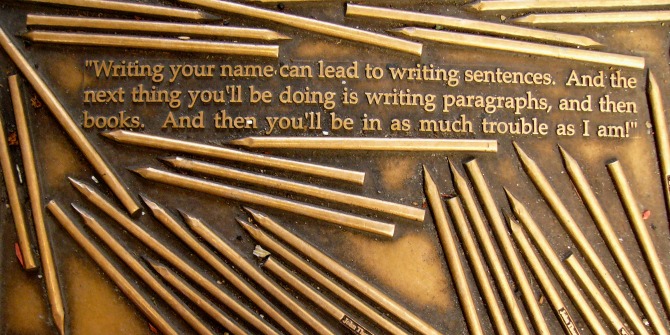Managing Editor Sierra Williams presents a brief round-up of popular stories from around the web on higher education, academic impact, and trends in scholarly communication.
Paige Brown Jarreau at SciLogs calls out Science‘s latest ‘Top Scientists on Twitter’ list for reducing social media science engagement to popularity. She considers what criteria might lead to more enriching experiences with science communication on Twitter in her post I’ve Never Been On a Top Twitter Science List:
Does having a large list of followers – or being popular – automatically make you a great Tweeter of science? The answer is no, it doesn’t. This seems like a silly question, right, when we ask it so explicity? But unfortunately, some form of popularity is too often used as a metric of scientific outreach, and even scientific impact…One thing we could start looking for in scientists’ Twitter streams is the degree to which they facilitate true public engagement with science. A dialogue-based approach to public engagement involves two-way, symmetrical communication, not one-way self-promotion or even popularization of science. [read more]
For more discussion on the laziness of the Science list and how scientists can get a better grip on social media metrics, Kate Wing’s post from earlier this week is also definitely worth a read.
Authors Guild vs. Google: Fair Use or Foul Play? Mark Robertson interviews Professor of Law F. Jay Dougherty about the Google Books Library Project and whether it qualifies as fair use in relation to US copyright law.
At one time, the commerciality of a use was considered very important; in fact, the statute itself mentions it as an important consideration. But since the transformativeness test evolved as an important part of the analysis, courts have downplayed the commerciality aspect if they find a use to be transformative. [read more]
 Google Digitization signs by Timothy Vollmer (Wikimedia, Creative Commons Attribution 2.0 Generic)
Google Digitization signs by Timothy Vollmer (Wikimedia, Creative Commons Attribution 2.0 Generic)
Two years ago the journal BMC Pharmacology and Toxicology decided to operate under an open peer reviewed model where authors were made aware of the identities of their peer-reviewers and the reviews are made public. In a recent editorial, Open, single-blind, double-blind: which peer review process do you prefer? by Elizabeth C Moylan, Simon Harold, Ciaran O’Neill, and Maria K Kowalczuk, the editors present the findings from a survey that solicited views on the open peer review model from their Editorial Board members where a majority of their respondents reported a preference for double-blind peer review as opposed to open. Further discussion on this topic can be found in this synopsis blog.
The History Manifesto by historians David Armitage and Jo Guldi is the first OBonfire of the humanities: Public debate is afflicted by short-term thinking – how did history abdicate its role of inspiring the longer view?
The humanities departments of our universities should be the place to go for a long look in the rear-view mirror. After all, universities have been among the most enduring institutions humans have created. The average half-life of a business corporation has been estimated at 75 years: capitalism’s creative destruction sees most companies crumble before they reach their centenary. The Spanish founded universities in Mexico City and Lima in Peru decades before Harvard and Yale were chartered, and 450 years later, both still exist. The first wave of university foundations in Europe occurred between the late 11th and early 13th centuries. And India’s Nalanda University in the northern state of Bihar was set up as a Buddhist institution more than 1,500 years ago: it has been recently refounded and had its first new intake of students this September. As Michael Spence, vice-chancellor of the University of Sydney, recently wrote, universities are ‘the one player capable of making long-term, infrastructure-intensive research investments’; compared with businesses, they are the only ‘entities globally capable of supporting research on 20‑, 30‑, or 50‑year time horizons’. [read more]
This week’s final recommended read is a close look at the impact of NYU professor Helen Nissenbaum and how her research has shaped the US Federal Trade Commission’s approach to understanding privacy in the digital era. Nissenbaum’s influential privacy paradigm which posits the situational context of privacy norms, has been instrumental in shifting away from a binary conception where data is either private or public, argues Alexis Madrigal in the Atlantic in The Philosopher Whose Fingerprints Are All Over the FTC’s New Approach to Privacy:
Nissenbaum puts the context — or social situation — back into the equation. What you tell your bank, you might not tell your doctor. What you tell your friend, you might not tell your father-in-law. What you allow a next-door neighbor to know, you might not allow Google’s Street View car to know. Furthermore, these differences in information sharing are not bad or good; they are just the norms. [read more]








